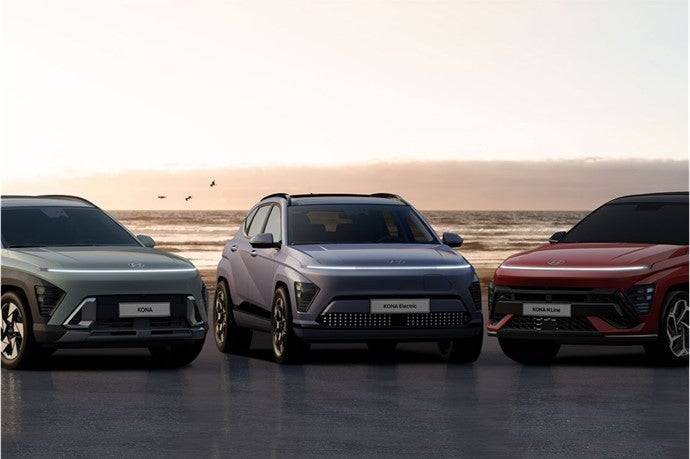
Hyundai Motor launched its second generation Kona subcompact SUV in South Korea last week, five years after the launch of the original model.
Hyundai said the new Kona offers a “roomier and more versatile interior” than its predecessor and improved cargo storage due to the customisable smart power tailgate.

Discover B2B Marketing That Performs
Combine business intelligence and editorial excellence to reach engaged professionals across 36 leading media platforms.
The range will initially be available with a 1.6-litre turbocharged petrol engine, a two-litre petrol engine and a 1.6-litre petrol electric hybrid powertrain with battery powered models following in the second quarter.
The automaker said the vehicle features advanced driver assistance systems (ADAS) including Forward Collision-avoidance Assist (FCA), Lane Keeping Assist (LKA), Blind-Spot Collision Avoidance Assist (BCA), Safe Exit Warning (SEW), Intelligent Speed Limit Assist (ISLA), Driver Attention Warning (DAW) and Blind-spot View Monitor (BVM) and High Beam Assist (HBA). It also equipped with various driving convenience functions, such as Smart Cruise Control (SCC), Navigation-based Smart Cruise Control (NSCC), Lane Following Assist (LFA) and Highway Driving Assist (HDA).
The new Kona also offers parking assistance including Surround View Monitor (SVM), Rear Cross-Traffic Collision-Avoidance Assist (RCCA), Forward/Side/Reverse Parking Distance Warning (PDW), Reverse Parking Collision-Avoidance Assist (PCA) and Remote Smart Parking Assist (RSPA).
The company aims to sell 37,000 Konas in its domestic market this year with hybrid models to account for 40% of total sales. Prices of the ICE and hybrid models range between KRW25m and KRW36m (US$20,400-$29,300).




